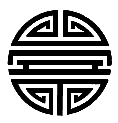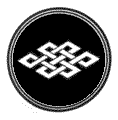 |
|||||||||||||
|
|
|||||||||||||
|
|||||||||||||
|
|
|
 |
|
|
|||||||
|
|
|||||||
|
|
|
|
HISTORICAL BACKGROUND OF BODYWORK THERAPY AND HEALING
There is a common misperception that bodywork therapy and neuromuscular therapy (NMT) or any other serious system of healing is somehow a new age invention of recent times. There is, however, ample evidence that hands-on healing methodologies have been an integral part of the human experience for thousands of years, in the opinion of many authorities, for as long as human beings have been living on the earth. The ancient history of the Orient, (especially China), Egypt, Rome, North and South America, India as well as most nomatic tribes and shamanistic healers have used some form of bodywork to ease the accumulated stress and strain of physical existence. Healing
traditions have been used by humanity for centuries: Cross
cultural theme of all the healing traditions:
The first recored mentioning of the bodywork was in China in a very famous text called the YELLOW EMPEROR CLASSIC. The ancient Vedas Vedas of India prescribed bodywork for many ailments. In China, the AH SHI POINTS closely parallels neuromusuclar therapy but pre-dates official mention of NMT by thousands of years. Early Western physicians: Hippocrates, Avicenna, Galen and many others employed bodywork and related techniquwa in their work. Evidence of sophisticated bodywork techniuques are found in Egyptian scolls, depicting types of advanced deep tissue bodywork. More recently in the West, the first medical descriptions of neuromuscular trigger points were made by a German physican, Dr. Froeriep in 1843. The Swedish doctors, Helleday and Kleend contributed also to this body of knowledge. In 1892 , Dr. Hoffa named these regions trigger points. Significant contributions were made by Schade and Schade and Frizlong in 1921, each of them describing similar points and referral zones while working independently os each other on different types of people with dissimilar diseases. Max Lange wrote the first treatment manual in 1913 and did significant experiments. Lange used a devise to measure pressure and tension in muscles called a sklerometer. Measuring over 250 regiions on several sympton free and healthy individuals he found that the healthy muscle tissue was homogenous, resilient and could take heavy pressure without pain. He also found that in healthy subjects, the pressure readingss in the muscles were very consistent and did not vary more than 10 %. In muscles with trigger points and myofascial pain, the resilient nature of the the tissue was interupted and lost. .Biopsies of tissue with trigger points showed microscopic changes in the muscles at the trigger point sites: increase in fibrous tissue, cross-linking of collagen fibers, fatty infiltration of the area, and increase deposits of metabolites. Schade demonstated that hard areas of trigger poinsts remained even under anaesthesia and after death. It is the honor of Advanced Manual Medicine to pass on the ancient healing art traditions. These timeless skills are more in demand than they ever were. The modern and mechanized society becomes, the more the need exists for healing, human touch. Join us in carrying out these traditions. Contact: 303-596-5341
 |
|
|
| [Home] [Instruction] [Styles] [Sessions] [Instructor] [Contact] |
Copyright 2023 For more information please contact: peggyd@manual-medicine.com |



